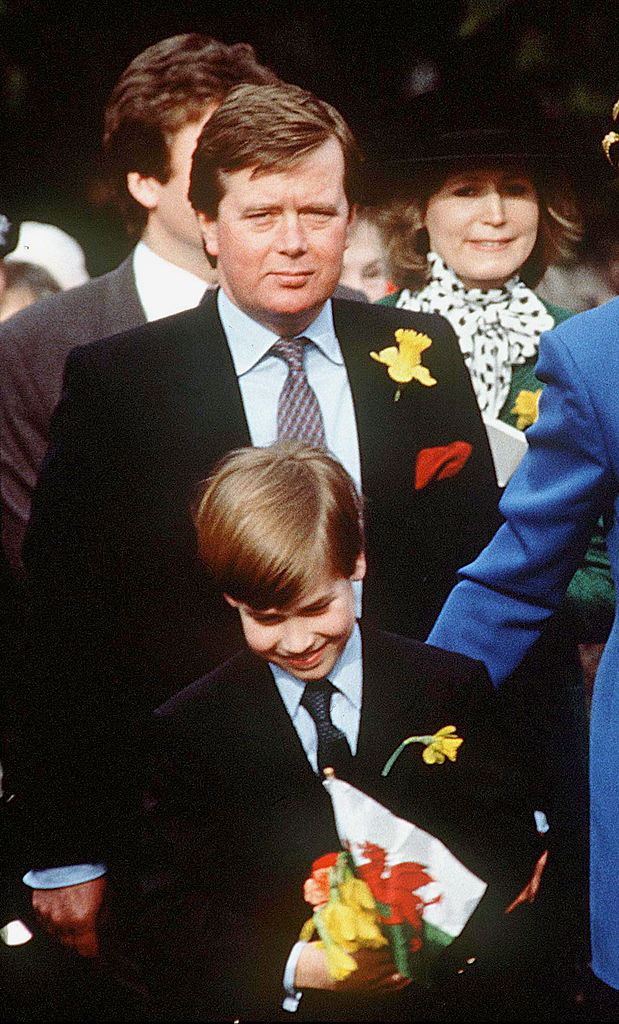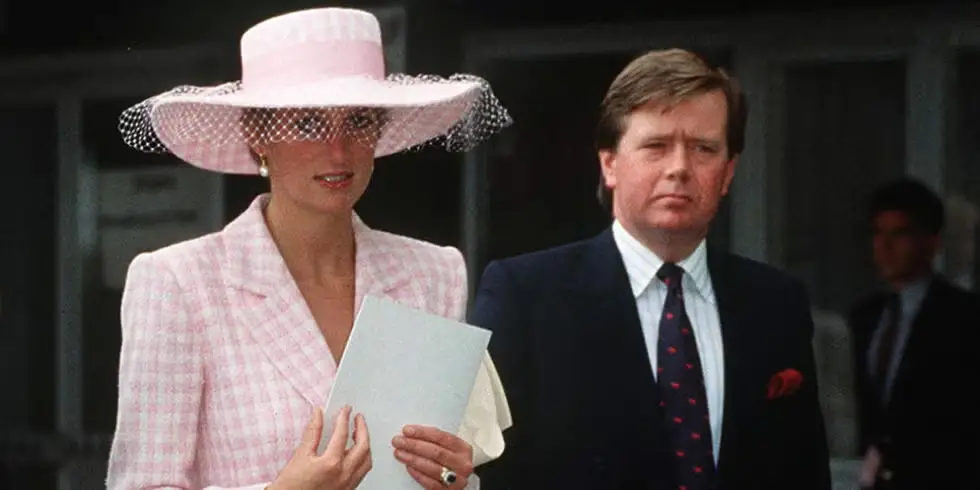Nearly 30 years have passed since Princess Diana’s untimely death, yet the mystery surrounding that fateful night still haunts many. In a deeply moving account, her former bodyguard, Ken Wharfe, asserts that three fatal security failures were responsible for the loss of the “People’s Princess.” Wharfe, who spent six years working closely with Diana, reflects on the events with both fond remembrance and sorrow, highlighting critical moments that, in his view, might have changed the course of history.

Andrew Stenning/Mirrorpix/Getty Images
Ken Wharfe recalls his very first encounter with Princess Diana—a meeting that left an indelible impression on him. Despite her royal status, Diana quickly revealed a down-to-earth nature. As Wharfe was introduced to her, she lightheartedly remarked, “I don’t envy you, Ken, looking after my kids. They can be a bloody nuisance.” In response, a young Prince William, who had been playfully attempting to play the piano, spun around and insisted, “No, we’re not a bloody nuisance!” Almost immediately, young Harry tumbled off a table, prompting Diana to rush over and call them both to her.
Wharfe remembers that moment vividly:
“You see what I mean, Ken?” she said, shaking her head with a mixture of amusement and exasperation.
In that brief interaction, Diana transformed the atmosphere. Instead of the distant, untouchable royal image that many expected, she emerged as a loving parent and a relatable human being—a woman who balanced humor with the heavy burdens of her role.
A Dangerous Driver Behind the Wheel
Wharfe’s account takes a darker turn when he discusses one of the most critical failures that night: the choice of driver. On that August evening in 1997, Princess Diana was traveling with her boyfriend, Egyptian film producer Dodi Fayed, along with Ritz security chief Henri Paul—who was at the wheel—and Dodi’s bodyguard, Trevor Rees-Jones, the sole survivor of the crash. According to Wharfe, a grave error was made when Henri Paul, who had been drinking and was reportedly four times over the legal limit, was chosen to drive.
Wharfe is convinced that Diana might have survived had a different decision been made. “The one thing that would have saved Diana’s life that night would have been if they’d kicked out the chauffeur and had Rees-Jones take the wheel,” he stated. Unfortunately, due to a strict chain of command and a lack of timely communication—Rees-Jones, though capable, was not in a position to assume control—Paul remained at the helm. The car sped dangerously and ultimately slammed into the 13th pillar of the Pont de l’Alma tunnel in Paris.

The Fatal Misstep: Outwitting the Paparazzi
Another critical mistake Wharfe highlights is the breakdown in coordination with local law enforcement. Diana and Dodi had intended to travel a short distance from the Ritz Hotel to an apartment near the Champs-Élysées. In a bid to evade relentless paparazzi, the couple’s security team had devised an elaborate plan involving decoy vehicles. A Range Rover was positioned at the front of the Ritz, manned by Dodi’s regular driver, while Diana and Dodi were to exit discreetly through the rear in a black armored Mercedes.
However, instead of following a well-orchestrated strategy, the plan fell apart. Henri Paul was summoned from home to drive the couple—a decision made under intense pressure. The subsequent high-speed chase, coupled with the absence of coordinated support from local police, proved disastrous. Wharfe believes that a proper collaboration with local law enforcement could have prevented the tragedy entirely. “They shut out the local police and viewed the press as the enemy,” he lamented, noting that had the security team worked in tandem with authorities, the entire scenario might have been avoided.
The Dismissal of Scotland Yard’s Protection
Perhaps the most heartbreaking of all, according to Wharfe, was Diana’s decision to let go of the protective umbrella offered by Scotland Yard. After her separation from Prince Charles in 1992, Diana yearned for a semblance of normalcy—a freedom from the constant intrusion of royal security. Wharfe vividly recalls urging her not to sever those crucial ties. “I told her, ‘I urge you not to lose the Scotland Yard security. We have broken rules to grant you the freedom you crave, and there’s no reason why that shouldn’t continue.’”
Despite this heartfelt advice, Diana chose to dismiss her entire security team just four weeks later. In Wharfe’s eyes, that decision signaled a desire to start a new life, free from the constraints of her past. Yet, he remains convinced that had she maintained that protective presence, the outcome of that tragic night might have been very different.
Reflections on a Life Cut Short
Princess Diana’s death not only shattered a nation but also left a legacy of “what might have been.” For Wharfe, each of these security failures is a painful reminder of the vulnerabilities that can exist even at the highest echelons of power. The missteps—from the dangerous choice of driver to the lack of coordination with local authorities, and finally, the dismissal of Scotland Yard’s protection—combine to form a picture of systemic failure on a night that changed history.
Wharfe’s recollections are imbued with both admiration and sorrow. He speaks of Diana’s “wicked sense of humor” and her ability to connect with people on a profoundly personal level. His memories paint a portrait of a woman who was not just a princess, but a mother, a friend, and an icon who carried the weight of the world with grace and vulnerability.
The tragic end of the “People’s Princess” has since become a defining moment in modern history, prompting endless debate, reflection, and a reevaluation of how security measures are managed for public figures. For the families of those lost and for the countless fans who still mourn her absence, Wharfe’s account offers a bittersweet opportunity for closure—a chance to understand the layers of decisions that ultimately led to the loss of a life that touched millions.
A Legacy That Continues to Resonate
In the years since her death, Princess Diana’s legacy has only grown. Her funeral was a historic moment of national mourning, and the images of her wrecked car continue to haunt the public imagination. More than three decades later, the memory of Diana serves as a powerful symbol of compassion, resilience, and the tragic consequences of systemic failures. For many, Wharfe’s insights provide not just an explanation of what went wrong, but also a call to ensure that such failures are never repeated.
The inquest into her death, which has long been sought by those who feel justice has yet to be fully served, may now find new evidence in these detailed accounts. As historians and investigators revisit the events of that fateful night, every piece of testimony—like Wharfe’s—adds depth to our understanding of the vulnerabilities that existed and the human costs of those missteps.
A Personal, Poignant Farewell
As we reflect on Princess Diana’s life, it is impossible not to feel the profound impact she had on the world. Wharfe’s memories capture the essence of Diana—her humor, her humanity, and her relentless desire to be seen not just as a royal figure, but as a person who genuinely cared for others. Her untimely death left an indelible mark on history, one that continues to shape our collective consciousness.
In the end, the tragic events that unfolded that August night serve as a somber reminder that even the most celebrated figures are vulnerable. The failures in security that contributed to Princess Diana’s death were not merely administrative oversights—they were factors that, when combined, led to a loss that still echoes in the hearts of millions today.

